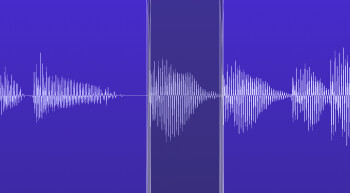In part 1 of this article we discussed using cut, copy and paste editing techniques to fix rhythmic mistakes. This time around, we'll use those same edit tools to replace notes that are the wrong pitch or badly played.
From here to there
Here’s another scenario: an instrument or vocal track sounds great except for the occasional flubbed note— either in terms of pitch or technique. Examples of the latter would be a note that was cut off too soon or one that got recorded with a stray noise of some sort. In many cases, you can simply replace that note with another one from the same track, and make it sound totally natural. You can also do this phrases or chords.
Let’s say your the bass track has either a wrong note or a badly played note in it. For the sake of this example, let’s say the bassist hit a G# instead of an A against an A chord in one of the choruses of a song. Here’s how to fix it:
- Find another spot in the song where the bassist hit an A note. The best place to look would be in the same spot in a different chorus, because the duration and attack would be similar.
- Select the note and copy it. Zoom in close to make sure you’re seeing enough detail to find the note’s beginning. If you’re using Pro Tools, you can use the Tab to Transients feature to find the initial transient (the beginning of the attack of the note) to cut or copy from. If not, copy and audition the copied section. If it sounds natural and you don’t hear another note before or after it, you’ve copied it correctly.
- Go back to the note you’re replacing, and place the cursor right at the beginning of it, like you did with the other note, and then paste in the note you copied. It will create a separate file for that note when you paste it in, so if the timing feels wrong you can nudge it one way or another until it sits right.
- Put short crossfades on both edges of the pasted note to smooth out the edit.
- Audition that section first with the note soloed, and then with the band, to make sure your edit is working musically and sonically.
- If necessary, adjust the volume of that note (using volume automation or a gain adjustment) to make it fit with the notes before and after.
But what if there isn’t another note of the same pitch to replace it with? Now you’re in more tricky territory, but there is something you can try.
- Find a note that’s played similarly to the offending note, and is close in pitch — preferably within two semitones.
- Follow the same procedures just outlined, but once you’ve replaced the bad note, you’ll need to use your DAW’s pitch correction (or that of a plug-in like Melodyne) to transpose the note to the correct pitch. The smaller the shift, the more likely it will sound natural. If you try to shift it too far, say, a fourth or fifth up or down, it’s probably going to sound weird. If it’s buried under a lot of other instruments at that point in the song, it’s possible that the weirdness won’t be noticed.
A cut above
To sum up, there’s a lot you can do in terms of corrective editing by just using the basic tools included in your DAW. Even if you have some fancy processing plug-ins in your arsenal, manual editing is often faster, and should always be an option when considering how to fix problems in a track.

